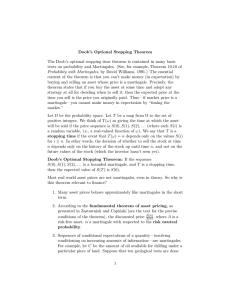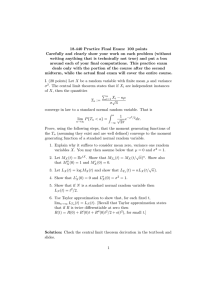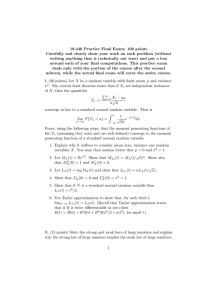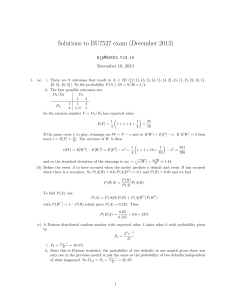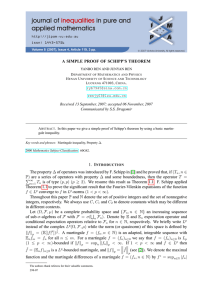Math 554 Iowa State University Introduction to Stochastic Processes Department of Mathematics
advertisement
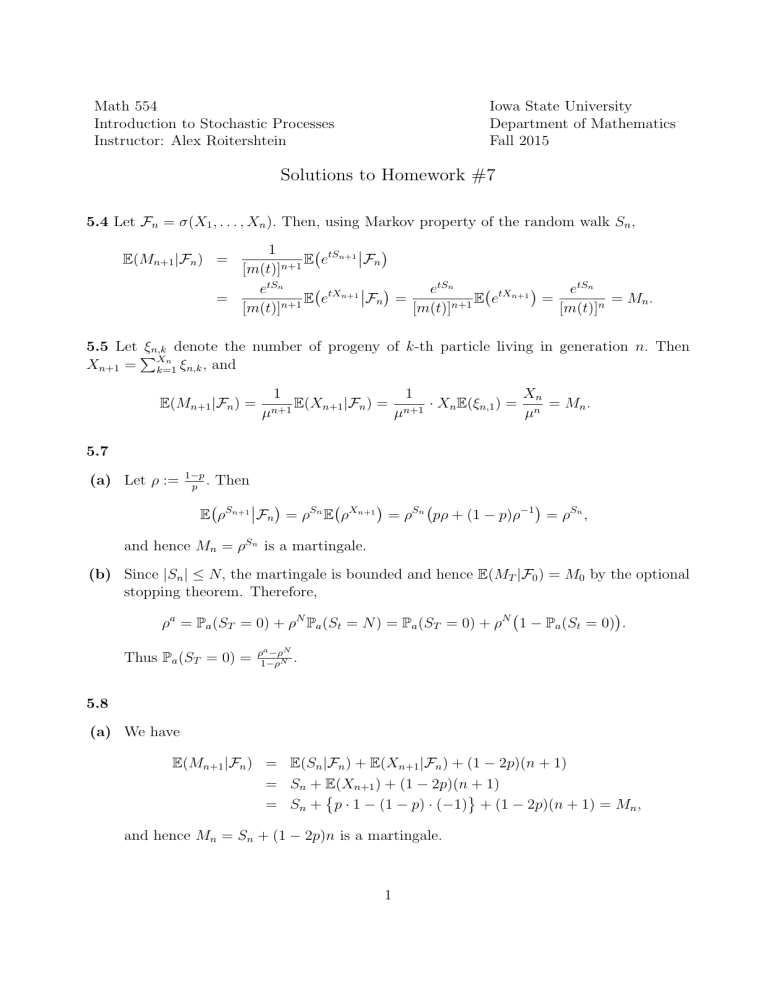
Math 554 Introduction to Stochastic Processes Instructor: Alex Roitershtein Iowa State University Department of Mathematics Fall 2015 Solutions to Homework #7 5.4 Let Fn = σ(X1 , . . . , Xn ). Then, using Markov property of the random walk Sn , 1 tSn+1 E e F n [m(t)]n+1 etSn etSn etSn tXn+1 tXn+1 = = E e Fn = E e = Mn . [m(t)]n+1 [m(t)]n+1 [m(t)]n E(Mn+1 |Fn ) = 5.5 Let ξn,k denote the number of progeny of k-th particle living in generation n. Then P n Xn+1 = X k=1 ξn,k , and E(Mn+1 |Fn ) = 1 µn+1 E(Xn+1 |Fn ) = 1 µn+1 · Xn E(ξn,1 ) = Xn = Mn . µn 5.7 (a) Let ρ := 1−p . p Then E ρSn+1 Fn = ρSn E ρXn+1 = ρSn pρ + (1 − p)ρ−1 = ρSn , and hence Mn = ρSn is a martingale. (b) Since |Sn | ≤ N, the martingale is bounded and hence E(MT |F0 ) = M0 by the optional stopping theorem. Therefore, ρa = Pa (ST = 0) + ρN Pa (St = N ) = Pa (ST = 0) + ρN 1 − Pa (St = 0) . Thus Pa (ST = 0) = ρa −ρN . 1−ρN 5.8 (a) We have E(Mn+1 |Fn ) = E(Sn |Fn ) + E(Xn+1 |Fn ) + (1 − 2p)(n + 1) = Sn + E(Xn+1 ) + (1 − 2p)(n + 1) = Sn + p · 1 − (1 − p) · (−1) + (1 − 2p)(n + 1) = Mn , and hence Mn = Sn + (1 − 2p)n is a martingale. 1 (b) Since STn ∈ [0, N ], we have: E(Zn2 ) ≤ E (N + (1 − 2p)T )2 ≤ 2 N 2 + (1 − 2p)2 E(T 2 ) . To conclude the proof it thus suffices to show that E(T 2 ) < ∞. Toward this end, use the result in Exercise 1.7 and write Z ∞ 2 E(T ) = P(T 2 > x)dx (substitute x = t2 ) Z ∞ Z0 ∞ 2 2 2 2tP(T > t)dt. P(T > t )dt = = 0 0 Since P(T > t) decays exponentially when t → ∞, this establishes the result. (c) It follows from the optional stopping theorem that E(MT |F0 ) = M0 = a, and hence N · P(ST = N ) + (1 − 2p)E(T ) = a. Thus E(T ) = 1 1 − ρa a−N . 1 − 2p 1 − ρN 2

